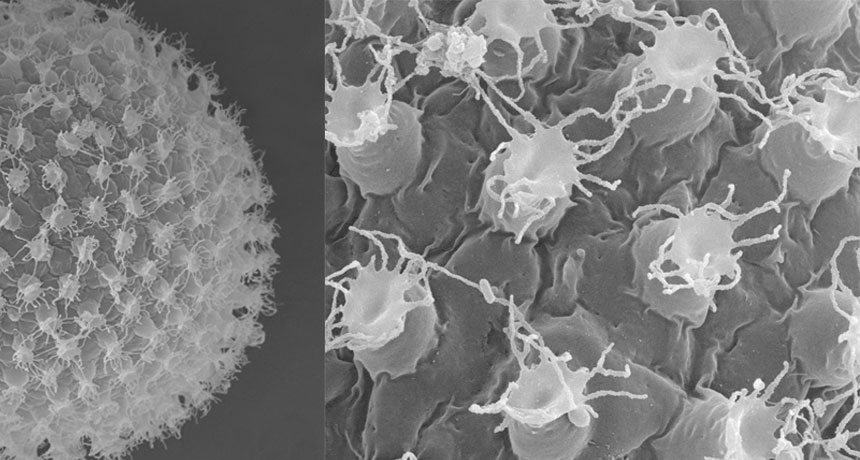A new species of tardigrade lays eggs covered with doodads and streamers
The newest of these tough little water bears was plucked from a parking lot in Japan

ELEGANT EGG The elaborate surface (right) of a microscopic tardigrade egg (left) was one of the clues that it came from a new species of water bear.
D. Stec, K. Arakawa and Ł. Michalczyk/PLOS One 2018






